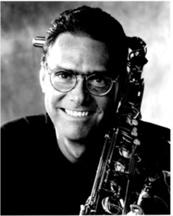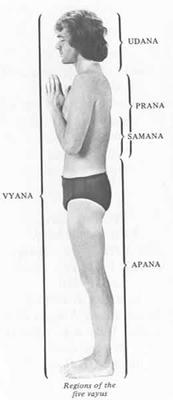
I just picked up Gary Campbell's book called
Triad Pairs. Mr. Campbell is and Associate Professor at Florida International University in Miami since 1993. His book thoroughly details how to use pairs of triads in Jazz improvisation.
In his introduction Mr. Campbell explains the importance of triad pairs in improvisation:
"Why Practice Triad Pairs?
1. By limiting note selection to six tones (each triad consisting of three), a more concise sonority is created. For example, the conventional chords used in the Jazz idiom are oftentimes associated with parent chord-scales of seven or more tones (melodic minor, major, minor, harmonic minor, and so on). Rendering these scales in the form of triad pairs yields more variety in tone color and suggests novel melodic possibilities.
2. Each of the triads expresses a tonality. By using two triads, bi-tonal effects are created. This effect is multiplied when the triad pair is used over a root tone that is not present in either triad.
3. The structure and "tensile strength" of triads give the melodic line an independent internal logic. The "stand alone" sound is oftentimes enough to make a strong, effective melodic statement regardless of how it is (or isn't) relating to the harmony over which it is being used. It sounds "right". {see my Thursday, August 18, 2005 post- Bob Reynolds on Garzone's Theory of Major Triads}
4. The triads offer a skeleton structure to base lines on. This can be very helpful in modal settings where there are no diatonic, cycle-forth root movements or resolutions and where each chord change may last a long time (for instance, four, eight, or sixteen measures)"
The applications of this concept are covered in great detail in this highly informative book.
Here is an example of the concept applied to a C melodic minor tonality:
A C melodic minor scale contains the following triads-
Cmin Dmin Eb+ Fmaj Gmaj Adim Bdim
The possible triad pairs are:
Cmin/Dmin__Dmin/Eb+__ Eb+/Fmaj__ Fmaj/Gmaj__ Gmaj/Adim__ Adim/Bdim Bdim/Cmaj
Of these the preferred selections are:
Cmin/Dmin_ Eb+/Fmaj_ Fmaj/Gmaj
These are the chords that a C melodic minor scale can effectively be applied to:
Cmi(maj7) Dsus(b9) Ebmaj7(#5) F7(#11) G7(b13) A-7b5 B7alt
- One of the most basic triad pairs is Major triads a Whole step apart. This one triad pair is explored exhaustively in Walt Weiskopf's book Intervallic Improvisation (Abersold press). I f you have ever heard Walt play you will hear him use this A LOT! It can be used over ANY Major chord and any Dominant chord with a natural 9th and 13th. These two triad triads contain the following:
1st triad- root, 3rd, 5th
2nd triad- 9th, #11th, 13th
Other triad pairs covered are:
- Major Triads a Half-Step apart
- Major Triads a Tritone apart (works well over dominant seventh b9 chords from the root)
- Minor triads a Half-Step apart
- Minor Triads a Tritone apart
And on and on.........
Here are is a triad pair idea for a /ii-7 /V7 /Imaj:
Over a- / D-7 /G7alt / Cmaj /
Play- / G triad F triad / Eb triad Db triad / C triad D triad /
- Here is the same concept applied to a diminished scale (also see my Monday,June 27th post-Slonimsky's Symmetrical Scales-Diminished, Wholetone):
Over a C7b9 chord you can play a- C# diminished 7th chord, a D# diminished 7th chord, AND A, F#, Eb, and C major triads.
All these ideas will open your playing up and break you out of the linear rut that Jazz players often fall into. If you start with some of these ideas and then start adding more outside triads to the mix you can come up with some very modern and interesting lines. Try adding some passing tones between the triads to smooth things out.
I would highly recommend Gary Cambell's Book Triad Pairs to any player looking for new improvisational material. This book will really open up your lines and give you some new ideas for playing over chord changes. It is also good for improving sight reading and technique.
Here is a link to order Triad Pairs for Jazz
 Master guitarist and teacher John Stowell has just released his instructional book/DVD (Mel Bay publishing). Stowell's unique and highly advanced harmonic concept is fully explained by this book and DVD. The DVD allows you to watch and hear exactly what he's doing and the book has transcriptions in guitar tab and music notation. John is all about modes of the melodic minor scale, he uses them over just about everything. Over dominant seventh chords he teaches students that there are several melodic minor options depending on how many tensions you want to use.
Master guitarist and teacher John Stowell has just released his instructional book/DVD (Mel Bay publishing). Stowell's unique and highly advanced harmonic concept is fully explained by this book and DVD. The DVD allows you to watch and hear exactly what he's doing and the book has transcriptions in guitar tab and music notation. John is all about modes of the melodic minor scale, he uses them over just about everything. Over dominant seventh chords he teaches students that there are several melodic minor options depending on how many tensions you want to use.









































